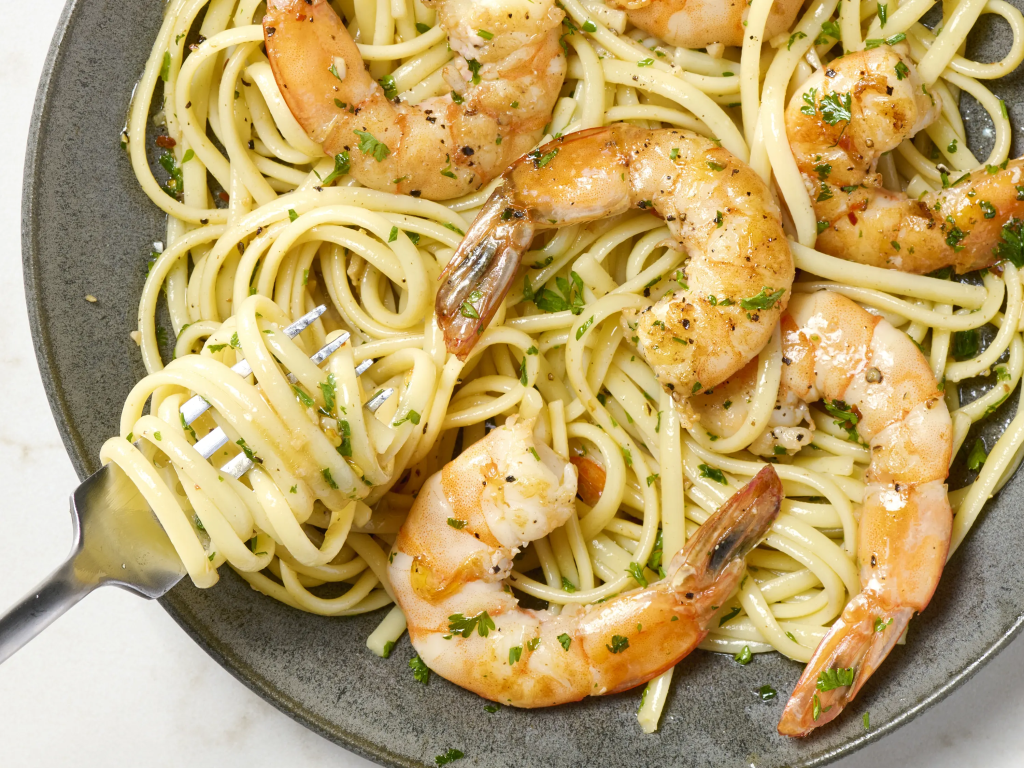If you’ve ever sat down to a delightful shrimp pasta dish, you might’ve noticed a small but curious detail: those shrimp tails are often still attached! You might wonder why chefs leave them on and what purpose they serve. From enhancing flavor to adding texture, there’s actually a good reason behind this seemingly minor choice. Let’s dive into the world of shrimp tails and discover why they’re often left on, turning a delicious meal into a thoughtful dining experience.
The Reasons Behind Keeping the Tails On Shrimp: Enhancing Flavor, Texture, and Visual Appeal
1. Enhancing the Flavor Profile of the Dish

Keeping shrimp tails intact does more than save the chef a step in prep; it can actually boost the flavor of the entire dish. The tail and shell hold concentrated juices that enrich the taste of the shrimp as they cook. Much like cooking meat on the bone, the shells act as a flavorful layer, allowing the natural flavors to infuse the shrimp and blend into the sauce. This method captures all the subtle flavors shrimp can offer, creating a richer, more robust taste that’s hard to replicate with peeled shrimp.
The flavor from the tail and shell also adds depth to the pasta sauce itself, making the entire dish more savory and complex. So, the next time you encounter tails on shrimp in your pasta, remember: it’s likely boosting the taste experience far beyond what peeled shrimp alone could offer.
2. Visual Appeal and Presentation
Chefs don’t just focus on flavor; presentation plays a huge role in enhancing a dish’s appeal. Leaving tails on shrimp adds a certain elegance and height to the plate, giving the meal a sophisticated, restaurant-quality look. The tails create a natural handle for the shrimp, allowing them to be arranged artfully around the plate or lined up along the edge of a bowl. It’s not just about flavor—it’s about creating an inviting and visually pleasing dish that captures the eye as much as it satisfies the taste buds.
This touch of artistry elevates a simple shrimp pasta into a gourmet experience, as the tails give each piece of shrimp a unique curvature and color. It’s a small but effective choice that makes the dish feel complete and well-presented, adding visual interest and even making the meal feel a bit more celebratory.
3. Practical Benefits of a Shrimp Tail “Handle”
While you may initially find the tails inconvenient, they can actually be a helpful addition for diners. In more relaxed or communal settings, having the tail provides a natural “handle” for eating shrimp by hand. For diners who enjoy picking up their food, the tail serves as a functional grip, making it easier to eat without utensils.
This is especially handy when shrimp are served in a shared dish, like a seafood platter or a tapas-style pasta. Holding onto the tail makes it easier to enjoy the shrimp without worrying about it slipping or breaking apart. Plus, the tactile experience can feel more engaging and connected, adding a hands-on enjoyment that’s a bit different from typical utensil-based eating.
4. Adding Texture Contrast to Each Bite
One of the most interesting aspects of leaving the tail on shrimp is the textural contrast it brings. While the tender, juicy flesh of the shrimp melts in your mouth, the tail offers a slight crunch for those who dare to bite down. While not everyone enjoys this texture, those who do find it adds another layer to the eating experience, creating a contrast that enhances the dish’s complexity.
It’s similar to adding crispy toppings to a creamy dish or croutons to a salad. The crunchy element, even if subtle, brings diversity to each bite, balancing the textures and making the meal feel more dynamic. For texture lovers, this is just one more reason to appreciate those tails.
5. Tradition and Culinary Roots

In many parts of the world, leaving shrimp shells and tails intact is rooted in culinary tradition. In various Asian, Mediterranean, and European cuisines, shrimp are served whole to celebrate their natural state and to honor the integrity of the ingredients. These traditions emphasize minimal alteration of the food, showcasing it as close to its natural form as possible.
Chefs often draw from these culinary backgrounds, incorporating these traditional practices into modern dishes. By leaving the tail on, they’re not only preserving authenticity but also paying homage to the culinary artistry passed down through generations. It’s a gesture of respect to the ingredient and the culture from which the dish originated, bringing a bit of heritage to each plate.
Is Eating the Tail Safe or Advisable?
For those wondering if they should eat the tail, the choice is entirely up to you. Shrimp tails are edible and offer a unique, crunchy texture if you’re up for it. Some diners savor the crispy tail as part of the meal, while others set it aside. There’s no right or wrong answer here; it’s simply a matter of preference. And while it may not be to everyone’s taste, it’s always an option for those who want the full experience!

If the idea of eating the tail doesn’t appeal to you, feel free to remove it. Chefs generally leave them on for flavor, presentation, and cultural reasons, but they don’t expect every diner to eat them. So whether you leave the tail or take it off, it’s all about what feels best for you.
Conclusion: Shrimp Tails as a Matter of Flavor, Presentation, and Choice
Ultimately, the decision to leave shrimp tails on is a blend of practical, aesthetic, and traditional reasoning. Whether enhancing flavor, adding visual appeal, or preserving culinary heritage, shrimp tails serve multiple purposes that elevate the dining experience. Though they may seem like a minor detail, these little elements add a layer of richness to each dish, making each bite a little more flavorful and each presentation a little more refined.
So, the next time you come across shrimp with tails in your pasta, appreciate the layers of thought that go into this choice. Whether you eat the tails or set them aside, understanding the reasoning can make the meal more enjoyable and even spark a newfound appreciation for the small but impactful decisions chefs make every day.


